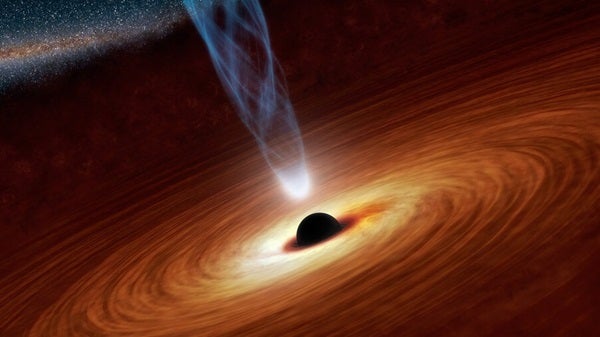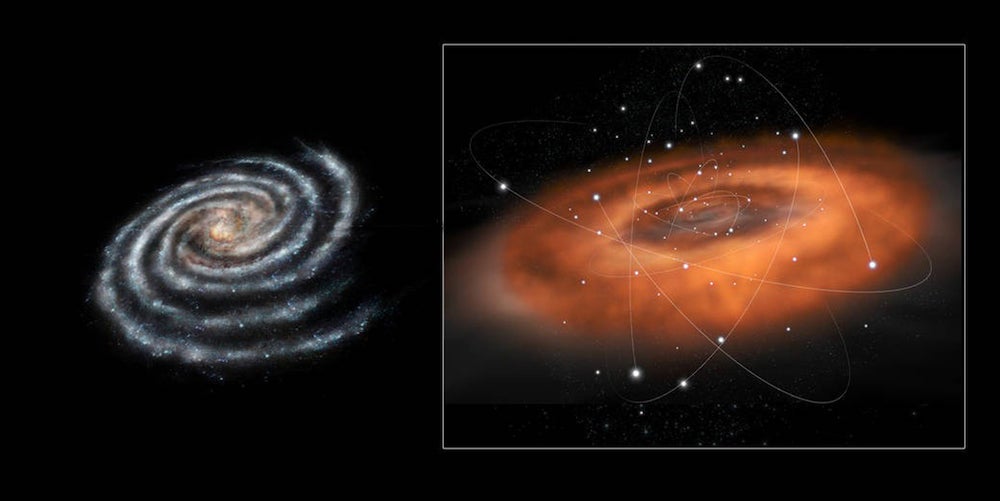
If a black hole begins as a star somewhere in a galaxy, how does it end up in the galaxy’s center? Is the gravitational pull so strong that all the stars in the galaxy start revolving around it?
Paul Simon
Raleigh, North Carolina
The black hole created by a single star’s death is called a stellar-mass black hole. These black holes have masses about two to 100 times that of the Sun. When a star explodes to create a stellar-mass black hole, it might give itself a little “kick” and start flying through space, but this kick is random and could send it inward, outward, or in any direction in 3D. So, these black holes don’t tend to end up in a galaxy’s center unless the star that created them happened to be there.
The type of black hole that’s sitting in the center of a galaxy is different. This is a supermassive black hole, or SMBH, and — as its name implies — it’s much heftier. SMBHs have masses of at least a million solar masses, up to several billion solar masses. The one in the center of the Milky Way is about 4.3 million solar masses, while the one in the center of the elliptical galaxy M87 is more like 6.5 billion solar masses.

SMBHs are not born the same way as stellar-mass black holes, nor do they seem to be typically made up of many smaller black holes all smooshed together. In fact, we don’t entirely know how SMBHs are born, but we do believe they arise roughly around the same time a galaxy is assembling itself, and we know that the two evolve together over time. But while they can influence each other, the gravitational interactions between an SMBH and its host galaxy are very minor.
Just because the SMBH is sitting in the center of a galaxy doesn’t mean all the stars are revolving around it. Even with its super-hefty mass, an SMBH may only account for some one-millionth the mass of the galaxy as a whole. That’s such a tiny fraction that the stars in the galaxy barely even know the SMBH is there, gravitationally speaking. Plus, the strength of gravity falls off incredibly quickly the farther you get from the black hole. So, only stars that are close to the black hole orbit it; the vast majority of stars in a galaxy orbit the center of mass of the galaxy as a whole, which is also in the center but is not actually the SMBH.
Alison Klesman
Senior Editor









